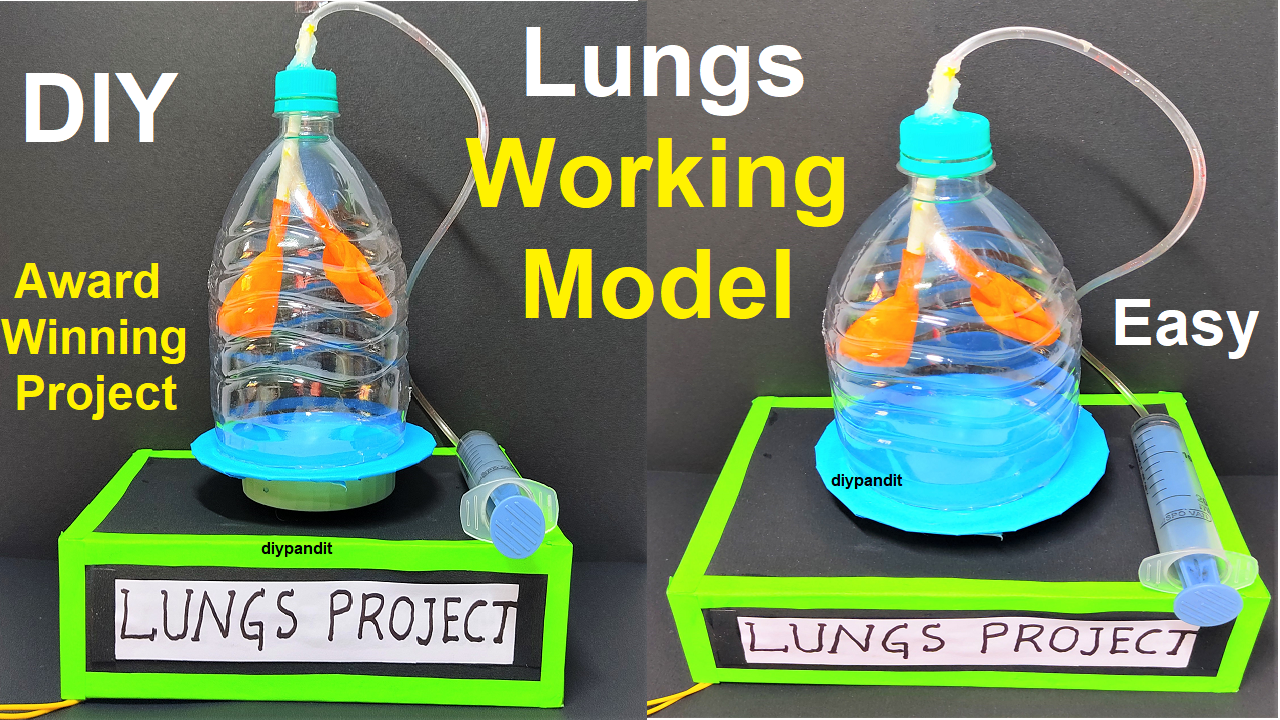Introduction:
In this project, we will create a working model of the lungs to demonstrate the breathing mechanism using a DC motor, balloons, and syringes. This model will help visualize how the lungs expand and contract during inhalation and exhalation.

Materials Needed:
- Two balloons (different sizes)
- Two syringes (20 ml or larger)
- DC motor
- Battery pack for DC motor (with switch)
- Rubber tubing
- Cardboard or foam board
- Straws
- Tape
- Glue
- Scissors
Step-by-Step Explanation:
- Creating the Base:
- Cut a piece of cardboard or foam board to create the base of the model.
- Attach the DC motor to the base using tape or glue.
- Attaching Balloons to Syringes:
- Attach one balloon to the open end of each syringe using rubber tubing or straws.
- The balloons will represent the lungs.
- Creating the Ribcage:
- Cut two curved strips from cardboard or foam board to represent the ribcage.
- Attach the curved strips to the base, on either side of the DC motor.
- Connecting Balloons to Motor:
- Attach the other ends of the rubber tubing or straws to the DC motor’s shaft.
- As the motor turns, it will cause the balloons to inflate and deflate.
- Assembling the Model:
- Attach the syringes with balloons to the cardboard ribcage, ensuring that the balloons are positioned like lungs.
- Make sure the balloons can inflate and deflate without any obstructions.
- Powering the Model:
- Connect the DC motor to a battery pack with a switch.
- Turn on the switch to power the motor.
Demonstrating the Breathing Mechanism:
- When the motor turns, it will create a flow of air through the rubber tubing, causing the balloons (lungs) to expand and contract.
- As the balloons inflate, it demonstrates inhalation, and as they deflate, it demonstrates exhalation.
- Explain that this model mimics how our diaphragm and intercostal muscles work to expand and contract the lungs during breathing.
Conclusion:
By building the lung model, you’ve successfully created a visual representation of the breathing mechanism. This project allows viewers to understand how the lungs expand and contract during inhalation and exhalation, enhancing their understanding of the respiratory system.

